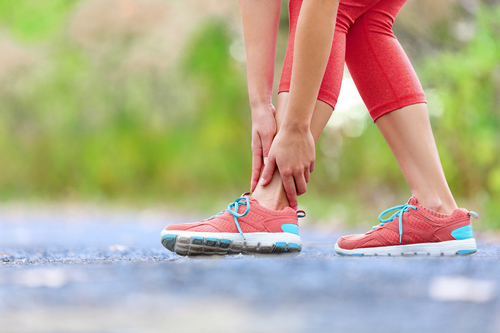
As Long Island’s leading orthopedist, Central Orthopedic Group diagnoses and treats several different orthopedic injuries on a regular basis. One of the most common types of orthopedic injuries we treat is strain injury. Now that the weather has plummeted, strains are among the common winter injuries treated here at Central Orthopedic Group.
Many people often confuse strains with sprains. These two terms are frequently confused. In truth, they’re actually two very different kinds of injuries. Most refer to strains as “pulled muscles.”
A tendon is the tissue that connects your bones to your muscles. Basically, a strain (or “pulled muscle”) describes an injury to a muscle or tendon. Strains can be anything from a stretch in the tendon to a tear in the tissue.
Below, we’ve gathered some basic information on strain injuries. If you’d like to find out more about them, or you think you might have a strain, keep reading to find out more!
Strains vs. Sprains
It’s easy to confuse these two terms with each other. Essentially, when it comes to strains and sprains, the two injuries have very similar symptoms. However, despite the similarities in symptoms, they affect different parts of the body.
Again: strains describe damage to tendons and muscles. Sprains are actually ligament injuries. Your ligaments are bands of tough, flexible fibrous connective tissues that connect bones and joints. Whenever you have a sprain, you’re basically coping with damage to those tissues. You have a sprain injury when your ligaments are torn or stretched.
While strains and sprains are similar in symptoms and both can be painful, they’re actually two very different injuries. Basically, sprains are ligament injuries and strains are injuries to tendons and muscles. In addition, both of them can be caused by jobs that are taxing on the body.
Strain Grades
Like most orthopedic injuries, strain injuries vary in severity. Some strains can be only an inconvenience and treated with natural pain management remedies. Others can be exceptionally serious, painful and require swift treatment.
Grade 1 strains are mild. Usually, when it comes to grade 1 strains, the tendon/muscle is basically overly stretched. Sometimes there can be tiny tears in the tendon. The pain is subtle and there may be swelling within the muscles. With grade 1 strains, they affect less than 5% of muscle fibers.
Grade 2 strains are moderate strains and occur when the tendons and muscles experience significant stretching. However, they’re not complete tears in the tissue. They do involve more damage than grade 1 strains, and can inhibit your strength, agility and motion. Grade 2 strains may require up to two to three months of recovery time before you can return to athletic or strenuous activity.
Grade 3 strains are severe. When it comes to grade 3 strains, most of the muscle fibers are torn – or the muscle itself is completely ruptured. Significant swelling, pain, tenderness and bruising usually indicate a grade 3 strain injury. In some cases, grade 3 strains require surgery to repair or reattach the damaged muscle tissue.
Treatment for Stain Injuries
Most of the time, strain injuries don’t require surgery. Usually, the reduction in pain and swelling will indicate that the strain has healed or is in the process of healing. Depending on the grade and severity of the strain, recovery time can take anywhere from a week to a few months.
Orthopedic experts recommend the RICE protocol for strain injuries: rest, ice, compression and elevation.
You can even apply the RICE protocol to many common orthopedic injuries. Additionally, non-steroidal anti-inflammatory medications like ibuprofen can be a huge help in coping with pain and recovering.
If you suspect you have a strain injury that needs medical attention, make an appointment with an orthopedic specialist right away!
Visit the Central Orthopedic Group
Strain injuries are definitely one of the most common orthopedic injuries. They can come from manual labor, sleeping incorrectly or even athletic activities like swimming or basketball. While most of the time they’re not too severe, understanding them is worthwhile.
